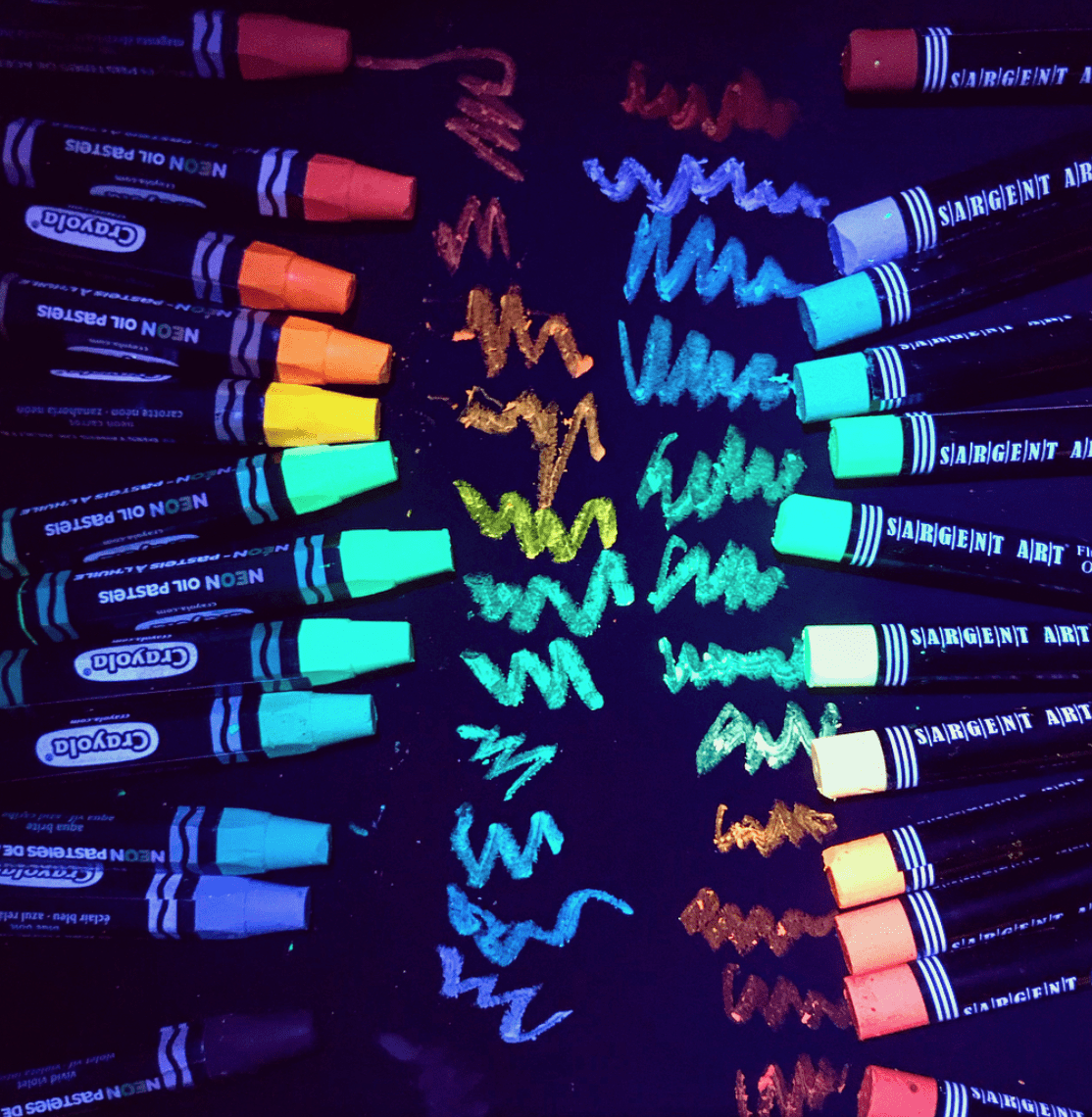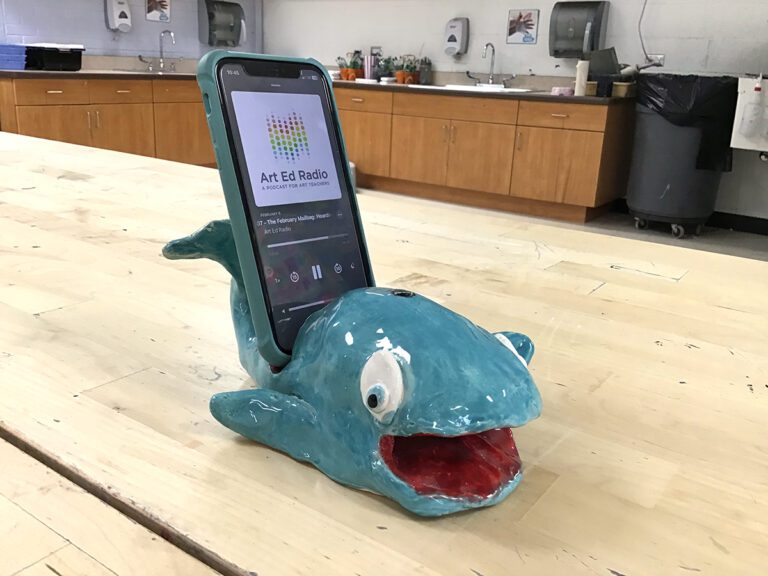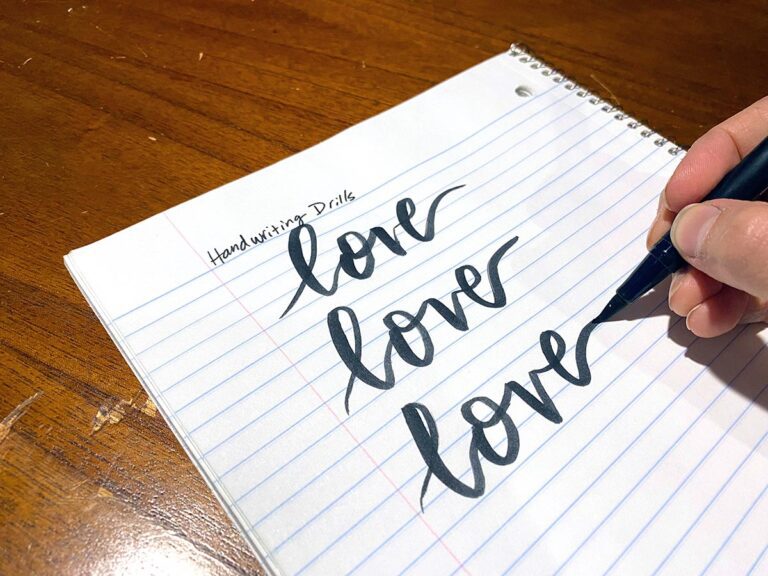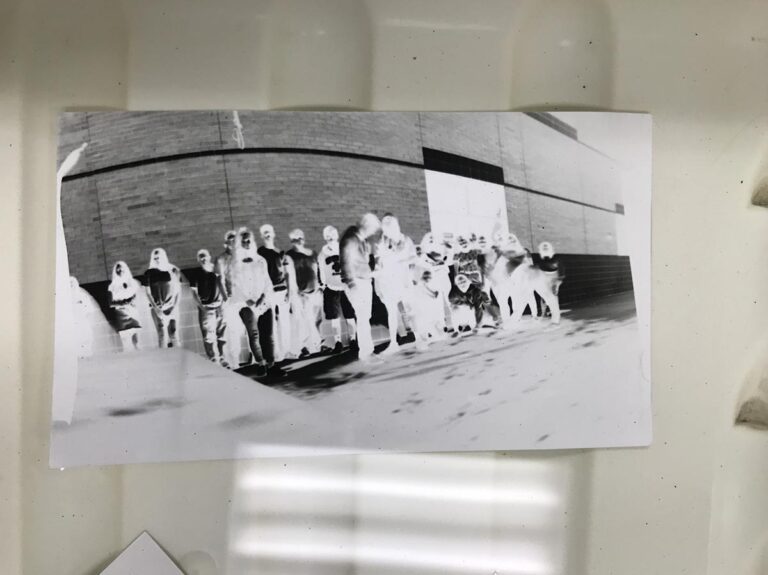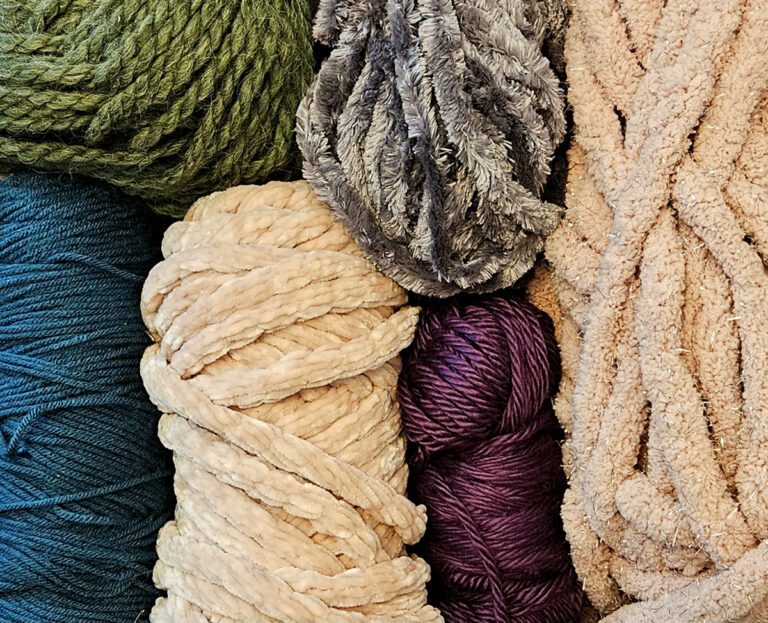It’s in my nature to try and put a positive spin on any situation. So when I switched schools and found myself in a classroom with no natural light, I was determined to find an upside.
After learning about glowing art galleries at my state’s fall art conference, I knew I found my answer. I had discovered black light art, and I was obsessed.
Here’s how to get started with black light art in your room!
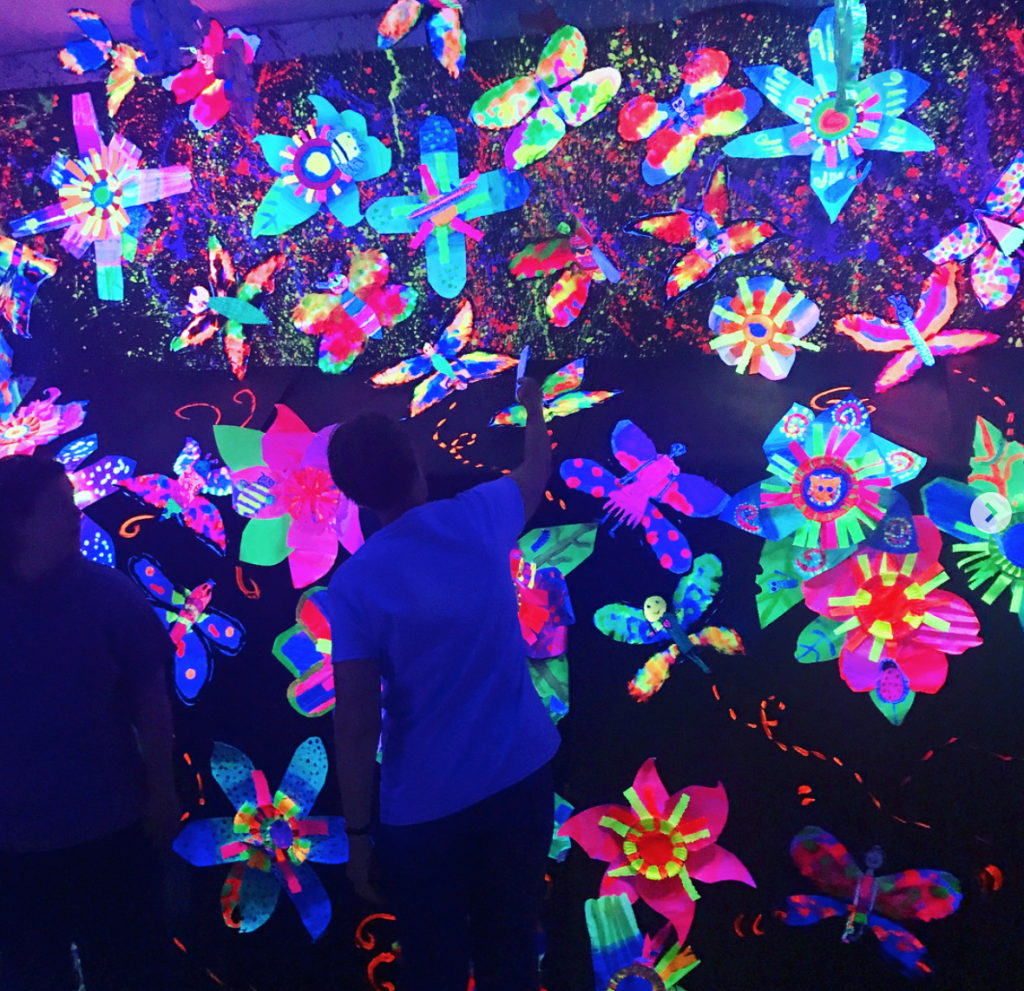
When I first started looking into black light art, I had a million questions.
- Do I have to use glow in the dark paint?
- What kind of special oil pastels do I use?
- How much is this all going to cost?
- How does it actually work?
- Is it…”magic”?
Lean in for the secret…
All you need are black lights and neon artmaking tools. That’s it!
Draw with neon oil pastels or splatter paint with neon tempera paint and shine a black light onto your creation. Presto—instant magic! Your artwork glows beautifully and creates a unique artmaking experience.
Here are the most important steps to start your black light addiction.
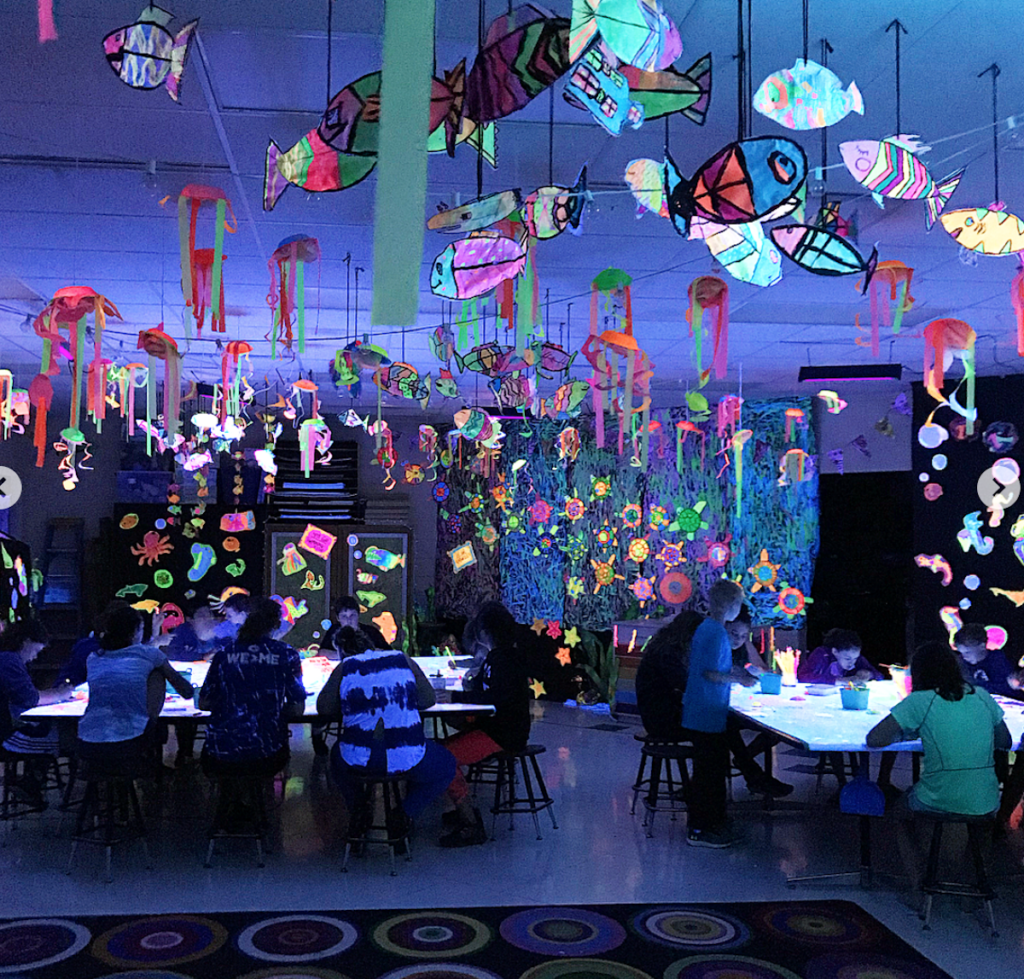
1. Get your black lights—they are essential!
A large black light spotlight is a great way to start your adventure in creating glowing art with your students. Long black light tube lights or handheld black light flashlights will also do the trick!
The type and number of black lights needed will depend on how large of a space you plan to light. If you want to light an entire classroom or hallway, I recommend starting with at least two spotlights or four long tube lights. The more lights you have, the better, but you can always start small and add to your collection.
Flashlights are also excellent for quick, portable testing of art materials or student work as they create. Any of these black lights can be found by searching on your favorite online shopping site.
Want to learn more? Check out Art Ed PRO Black Light Art!
2. Get your neon artmaking tools.
You may already have some in your classroom. There are neon versions of many classic artmaking materials. Paint, yarn, oil pastels, crayons, air dry clay, colored pencils, pipe cleaners, beads, puffy paint, paper, and watercolors are all great materials to try. As long as the material is neon, it will glow vividly when placed under a black light. Neon materials contain phosphors, which react with the black light.
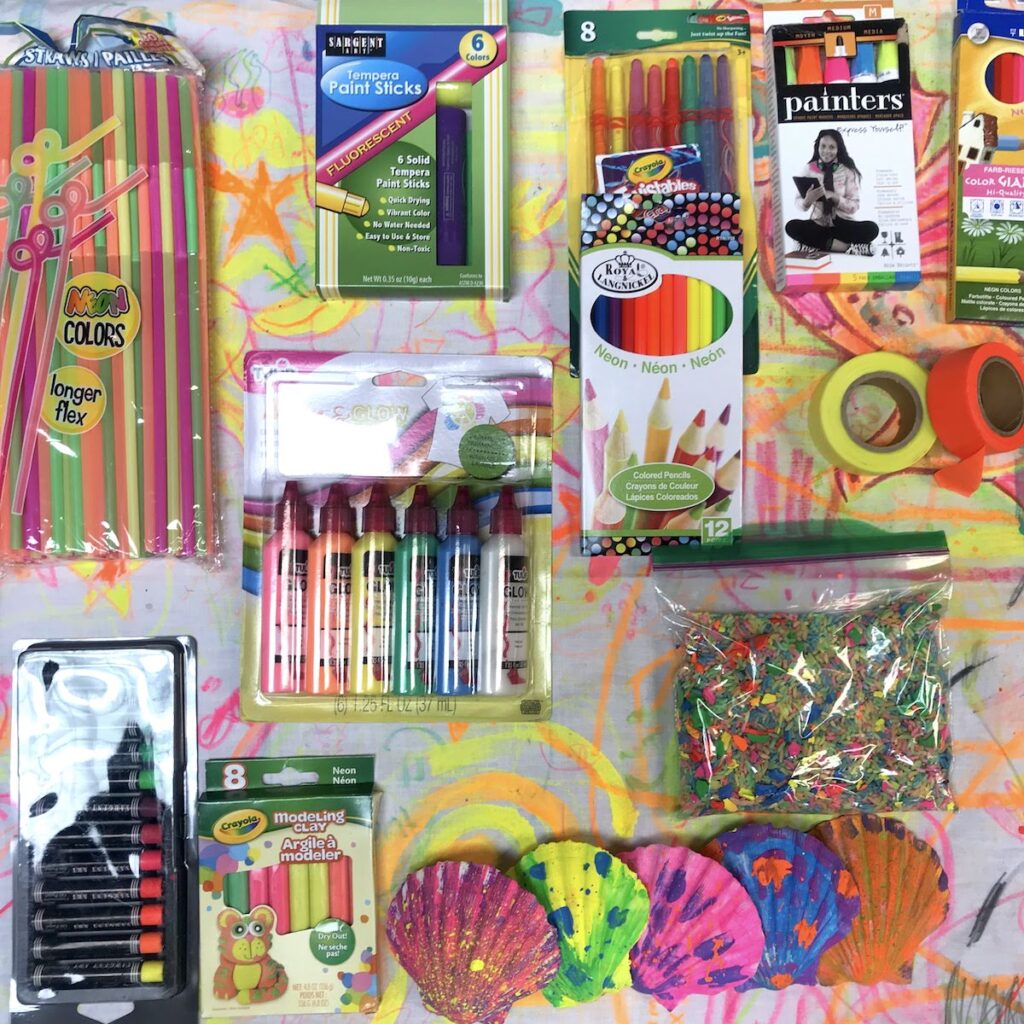
3. Decide on your black light project.
Do you want to adapt an existing project or try something entirely new? Think of a classic project you already love to do with your artists. Now, picture that project created with neon art materials. Glowing sea turtles, radiant sunset landscapes, bright patterned flowers…any project can be adapted to use these fun materials in a new and exciting way. Experimenting with your lesson ideas will also give you, as an educator and artist, an excuse to play and invent!
4. Decide how to display your art.
Will you choose a single classroom lesson or a larger art show event? Keep it simple. Create a lesson and classroom sharing experience using neon tools and a few handheld black light flashlights. Or go big and create a memorable black light gallery during an art event at your school. No matter what display method you choose, everyone will be in awe.
My first year, I created a fully immersive black light art gallery. Parents, administration, and community members entered the art room, and their jaws dropped. The walls were covered with neon tree frogs, glowing flowers, butterflies, and bugs. Now the black light gallery has become one of the highlights of our art show.
Soon enough, your supply order list will have a whole new look! Everything must be neon. You’ll constantly be on the hunt for crazy neon clothes to add to your collection so you can glow in your gallery! You’ll see neon zip ties at the hardware store and think, “I can use those!” With an abundance of black light ideas to try, are you ready for the challenge?
Have you ever used black lights in your art room?
What project do you think would be the most fun to try with neon art materials?
Magazine articles and podcasts are opinions of professional education contributors and do not necessarily represent the position of the Art of Education University (AOEU) or its academic offerings. Contributors use terms in the way they are most often talked about in the scope of their educational experiences.
